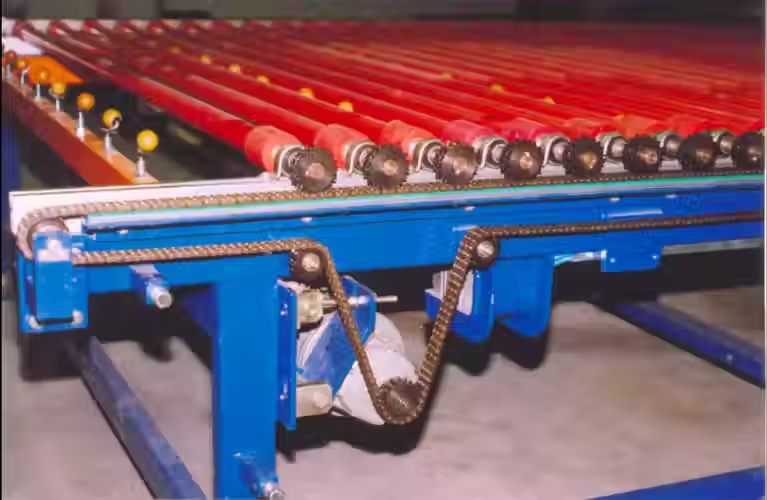Accumulation Rollers Conveyors Manufacturer in Bangalore
- Jaswanth srinivas
- Nov 5, 2024
- 3 min read
Accumulation Rollers Conveyors Manufacturer in Bangalore
Accumulation roller conveyors are critical components in modern material handling systems, particularly in industries that require efficient and flexible product movement. These conveyors are designed to manage product flow by temporarily holding or accumulating goods until they are ready to move to the next stage of a production line or packaging process. The innovative technology behind accumulation roller conveyors makes them indispensable for manufacturers seeking to optimize space, streamline operations, and ensure smoother workflows.
Key Features and Benefits
Controlled Product Flow: Accumulation roller conveyors provide the ability to manage product flow without manual intervention. These systems are capable of maintaining a steady stream of products and can adjust the pace of movement depending on downstream processes. This is particularly important for industries such as packaging, manufacturing, and distribution, where seamless transitions between production phases are essential.
Types of Accumulation:
Zero Pressure Accumulation: This type is designed to ensure that products do not touch each other while they are being accumulated. Sensors are typically used to detect the presence of products and stop the rollers as needed, preventing damage or misalignment.
Minimum Pressure Accumulation: In this type, the conveyor applies a slight amount of pressure to the products. This approach is useful when a higher density of accumulation is necessary, such as in cases where space is limited.
Full Width Roller Accumulation: This setup uses rollers across the entire width of the conveyor, providing a stable platform for items of various sizes and shapes.
Durability and Customization: Manufacturers of accumulation roller conveyors emphasize building robust systems that can withstand constant use and heavy loads. These conveyors are made using high-quality materials such as stainless steel, aluminum, and coated metals to ensure longevity and reduce maintenance costs. Furthermore, customization options are available, allowing businesses to tailor the conveyors to their specific needs, including width, length, and roller spacing.
Integration with Automation: Accumulation roller conveyors are frequently integrated into automated systems. This allows for synchronization with robotic arms, sensors, and control systems that optimize the timing of product movement. The integration of automation results in significant improvements in efficiency and precision, reducing human error and labor costs. Conveyor systems can be linked with programmable logic controllers (PLCs) and industrial IoT devices, enabling real-time monitoring and adjustments.
Applications in Various Industries:
Manufacturing: Used in assembly lines to pace the flow of products between stations.
Distribution Centers: Essential for sorting and handling large volumes of products.
Food and Beverage: Ensures items like bottles and cans are accumulated without damage.
Pharmaceuticals: Provides a reliable way to transport fragile items securely.
Manufacturing Considerations
When producing accumulation roller conveyors, manufacturers must consider several technical and practical aspects. Precision engineering is crucial to ensure that the rollers are aligned correctly and that the entire system operates smoothly. The choice of motor and drive mechanism also plays a vital role in determining the speed and energy efficiency of the conveyor. Modern Accumulation Rollers Conveyors Manufacturer in Bangalore often incorporate advanced drive systems, such as motorized roller technology, which reduces energy consumption and noise levels while providing precise control.
Challenges and Solutions
Despite their advantages, accumulation roller conveyors can present challenges, including jamming, wear and tear, and the need for regular maintenance. To combat these issues, manufacturers have developed innovative solutions like automatic lubrication systems, durable roller materials, and real-time monitoring sensors that alert operators to potential problems before they escalate.
Conclusion
Manufacturers of accumulation roller conveyors continue to push the boundaries of efficiency and customization to meet the evolving needs of various industries. With advancements in automation and material technology, these systems are becoming more reliable and versatile, making them indispensable for operations focused on efficiency, accuracy, and scalability. Whether used in manufacturing plants, distribution hubs, or packaging facilities, accumulation roller conveyors enhance productivity and contribute to smoother, more efficient workflows.




Comments